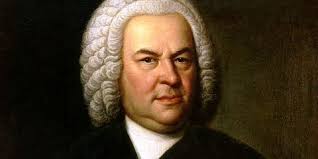Among the towering works of the keyboard repertoire, few have captivated audiences and musicians alike as profoundly as The Goldberg Variations, BWV 988, by Johann Sebastian Bach. This monumental composition, originally written for a two-manual harpsichord, is not only a showcase of Bach’s genius as a composer but also a work steeped in fascinating history, legend, and musical innovation.
A Commission Born of Insomnia?
The most well-known account of the origins of The Goldberg Variations comes from Bach’s first biographer, Johann Nikolaus Forkel. According to Forkel, the work was commissioned by Count Hermann Karl von Keyserlingk, a Russian ambassador to the Saxon court in Dresden. The count, plagued by insomnia, asked Bach to compose music that could be performed by his personal harpsichordist, Johann Gottlieb Goldberg, during sleepless nights. The result was a set of variations so elegant and varied that the count reportedly called them his “favorite music” and would often exclaim, “Dear Goldberg, do play me one of my variations.”
While this charming story has become part of the work’s lore, scholars today debate its historical accuracy. There is no direct evidence linking the count or Goldberg to the original manuscript, and it is unclear whether the composition was truly written for this purpose. Nonetheless, the nickname “Goldberg Variations” has endured.
Structure and Innovation
Published in 1741 as part of Clavier-Übung IV, The Goldberg Variations stand as a masterclass in contrapuntal writing and formal architecture. The work begins with a serene and graceful Aria, followed by 30 variations, and concludes with a repeat of the Aria, creating a symmetrical musical journey.
Bach employs a remarkable degree of variety and ingenuity across the variations. Every third variation is a canon, beginning with a canon at the unison and progressing to higher intervals with each subsequent canon, culminating in a canon at the ninth. In between these canons, Bach includes a dazzling array of styles and textures—virtuosic hand-crossing passages, ornate Baroque dances, and even humorous and folk-inspired pieces.
The 30th variation, known as the “Quodlibet,” is a playful combination of two popular German songs. This surprising finale reflects Bach’s flair for humor and his joy in blending the sacred with the secular, the learned with the lighthearted.
Rediscovery and Legacy
After Bach’s death in 1750, The Goldberg Variations fell into relative obscurity for nearly two centuries. It wasn’t until the 20th century that the work truly re-entered the public consciousness—largely thanks to Canadian pianist Glenn Gould. His groundbreaking 1955 recording, characterized by its crystalline clarity and brisk tempos, became a landmark in classical music and brought The Goldberg Variations to a global audience.
Gould’s interpretation, and his radically different 1981 re-recording made shortly before his death, reignited interest in the piece and helped to establish it as one of the most revered works in the keyboard literature. Today, the Variations are performed and recorded by pianists and harpsichordists around the world, each bringing their own insight to its timeless beauty.
A Testament to Genius
Whether viewed through the lens of historical intrigue, structural brilliance, or expressive depth, The Goldberg Variations remain one of Johann Sebastian Bach’s greatest achievements. It is a work that transcends its time—a sublime journey of transformation, offering endless rewards to both the listener and the performer.


No responses yet